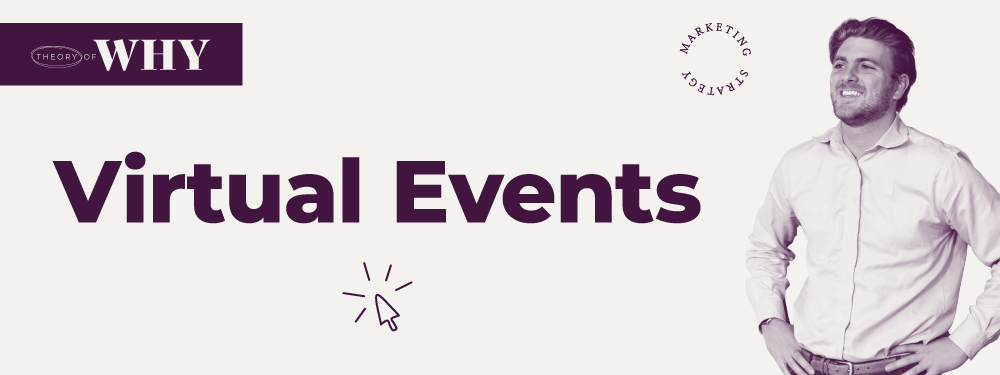On this episode of Theory of Why, a video series focused on helping organizations make smart marketing moves, I explain why now is the time to get started with digital events and why the four reasons organizations are staying away from them are actually opportunities. Then I’ll walk you through practical advice to help you take the first steps toward helping your organization stand out with virtual events.
At Firespring, we always keep it real—so if you’d like the actual transcript of today’s video, I’m sharing my wildly unedited script. Embrace the chaos and enjoy.
Video Transcription
Hey everybody, in this episode of Theory of Why, we’re talking virtual events. Whether you are a marketing professional trying to drive awareness and purchases of a product or service, or you are a nonprofit, fundraising or marketing professional trying to drive donors and volunteers to your organization, events have always played a role in marketing strategy. And if they haven’t been a part of yours, it presents the opportunity to start using virtual events (and eventually in-person events in the near future or extended future).
The first thing I want to talk about is how we have shifted from all in-person events to either no events at all or only virtual. And how over the next six to 12 months, as the economy opens back up and the environment becomes a little bit safer, there is going to be a huge rush back into event planning and event opportunities for your nonprofit or business. But that leaves an opportunity for you to really plan and execute a digital event during a time when it’s imperative to find success in reaching your audience.
Four reasons marketers stay away from virtual events.
So I want to first address a study done by BrightTALK. They interviewed 1,000 different marketing professionals on why they have not moved to virtual events. Here are the results:
- 34% do not believe they have the time.
- 27% think content creation is too much of a challenge.
- 22% believe that digital events are ineffective and a waste of money and time.
- 15% of say they don’t know how or never even thought about this option.
How to add virtual events to your marketing plan.
So I’d like to debunk those beliefs, and then leave you with the challenge to build out some of these event plans for your own organization.
Scale down.
Not enough time is a huge concern for everybody right now. That and not enough budget—but a virtual event actually gives you the opportunity to do something on a much smaller scale. If you think back, most events before the COVID-19 pandemic were directly related to your organization—to driving dollars toward your product or to your cause. The shift in mindset that needs to occur for a virtual event is that everything should be about your audience. These individuals have less time. They also have probably less money right now to give, but they have a greater need for interaction with their peers and engaging with their community. So a smaller virtual event will be very attractive to them right now.
Reuse content.
Content creation really doesn’t need to be a challenge. If you’re able to create quality content for your event, you’re actually going to have more content for your social media, your email and even your direct mail platform. Multi-purposing your event messaging, video, and other content to other marketing channels will give you a big bang for your effort.
Start small.
Number three, perceived as an ineffective channel: Depends on what you’re going after, right? If you’re holding this event to the same caliber as your big gala or a product display event that you were having pre-pandemic, well, of course, it’s going to be ineffective. But if you’re focusing on it as an effective way to communicate with your audience, build a relationship and engage with your community, then that’s where you can really see it shine. Don’t know how? Start small—use Zoom, GoToWebinar, Facebook Live. Just invite people to engage!
Don’t wait.
For those who never thought about it: Well, now you have! This virtual event tactic is working across all industries. Again, whether you’re a nonprofit, a B2B, B2C, retailer, consumer, big industry—you can find success with virtual events. And you can do it on a much smaller scale than those 10,000-person events. The key is defining your goal and determining how you’re going to effectively communicate with your supporters. Then put that plan in motion so your audience is compelled to show up. After your event is over, it’s key to continue to communicate with your audience, engage with them and build those relationships. My challenge to you is to find a way to throw a virtual event between now and March of next year, even if it is on a small scale. Throw that virtual event, try it, because it might be something that even after the pandemic ends, you’re still able to use in your marketing and fundraising approach. Have a great day.

